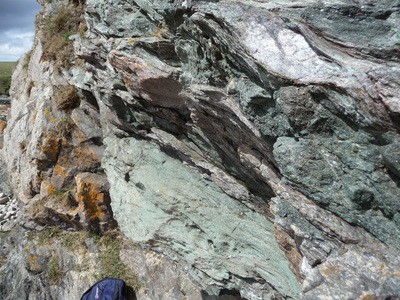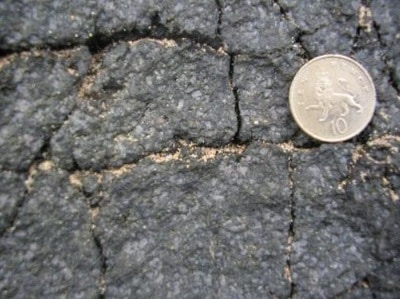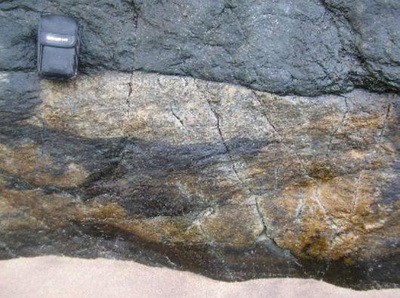Sango Bay
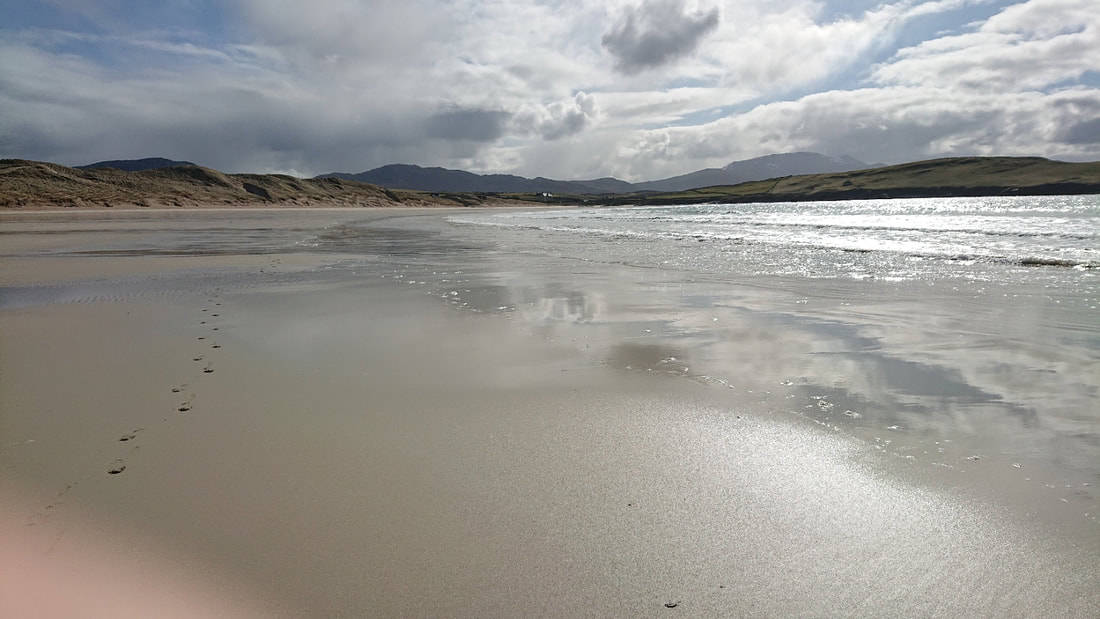
At the tourist information centre (1 mile west of Smoo Cave) you can see examples of the area’s numerous rock types in a standing stone display which has all of the stratigraphic names and ages provided – Streetview.
Sango Bay is a relatively small graben structure which contains ‘downthrown’ metamorphic rocks belonging to the Moine Thrust Zone and Moine Thrust Sheet. The bay which is bound by a series of normal faults (most likely to be Permo-Triassic in age) separates two major fault blocks of Durness Limestone on either side. The large cliff at the eastern end of the beach (known as Creag Ruadh) is the face of the Sangomore Fault – one of the finest exposed fault planes in the British Isles. It is coated with a layer of crushed rock which is the result of past fault movements (known as a cataclasite) and is often a red colour due to the presence of hematite, hence the cliff’s name which is Gaelic for red cliff.
In the headland at the western end of the main beach (beneath the viewing platform), an outcrop of the Moine Thrust Zone can be scrambled over where the Durness Limestone has been truncated by a thin slice of deformed white-grey quartzite (too thin to be shown in Fig 1). This is the Cambrian quartzite which would be below the limestone in a normal sequence. Above this is the ‘Oystershell Rock’ mylonite (a sequence of intensely sheared / stretched Lewisian Gneiss with an oyster-like texture; nothing to do with fossil oysters!) which in turn has been thrusted on top of the quartzite. Some authors refer to this thrust as being the Moine Thrust whilst others interpret it as being another major thrust fault within the thrust zone (the favoured choice on this site).
As a result, Sango Bay is notable for showing exceptional examples of the two main types of fault rock; mylonites which are the result of plastic deformation and cataclasites which are formed by brittle fragmentation. These are linked to the two different types of geological fault being seen where the thrust (or reverse) faults of the Moine Thrust Zone have been cut by younger Permo-Triassic normal faults.
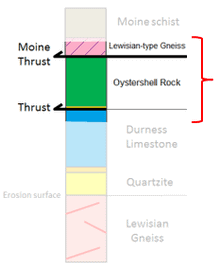
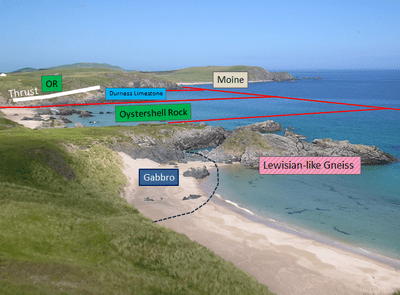
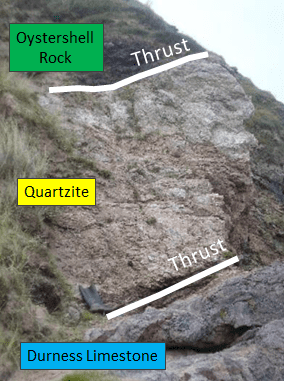
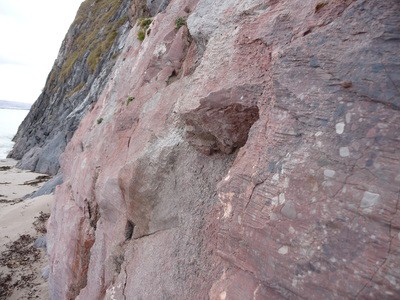
Additional normal faults have dropped sections of quartzite and Oystershell Rock down to beach level and if sand levels are low enough then a bright white / orange-tan coloured calcite formation can be seen filling some voids within the heavily fractured quartzite. This calcite was most likely deposited by fluids which once flowed along the fault zone when it was at a greater depth than it is today. The down-faulted Oystershell Rock seen in the sea-stacks is from higher in the oystershell sequence and has a different appearance to the banded basal type seen directly above the thrust.
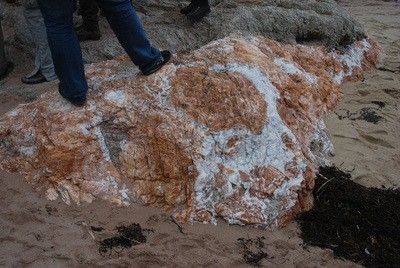

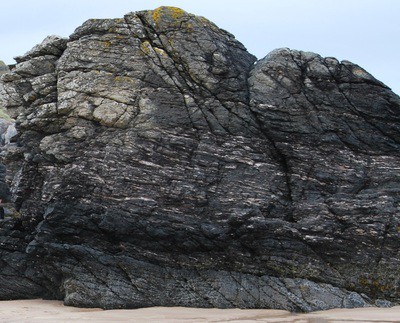
Pink, grey and green coloured Lewisian-type gneisses of the Moine Thrust Sheet are present across the south-eastern side of the bay and also show evidence of stretching as a result of thrust movements / shearing. Due to certain metamorphic temperatures being experienced whilst this took place at great depths within the Earth’s crust, some minerals have been chemically replaced by others. The most obvious are the shiny, green-coloured minerals such as chlorite which now form some bands, something which isn’t seen in the Lewisian gneisses outside of the thrust zone at Ceannabeinne and Sangobeg. A similar process has occurred within the Oystershell Rock, hence why it also has a greenish colour. The ‘true’ Moine Thrust should (in theory) be present beneath the sands at the boundary between the Oystershell Rock and the Lewisian-like Gneiss but it is very possible that it has been ‘faulted out’ by yet another normal fault which may divide the two rock units.
Finally, a blueish-grey coloured outcrop of gabbro-like rock contains numerous mm-scale crystals and can be seen beside the gneisses around the high tide mark. This once-molten body was intruded into the surrounding Lewisian-like gneisses at great depth before cooling slowly ~1300 million years ago. If sand / tide levels are low enough, a complex contact between the intrusion and the gneisses can be seen within a small narrow inlet, pictured below (right).
